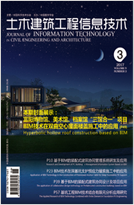Abstract:
The placement of garbage in rural areas usually does not take into account the orientation of buildings and lack of quantification of its impact, etc. Based on the oblique photography model in rural areas and the characteristics of rural buildings, this paper proposed an optimization method for the placement of rural garbage by improving multi-objective simulated annealing algorithm. According to the proposing principles for determining initial candidate locations for garbage based on a priori geographic information data, this study presented new solutions. Firstly, the method of calculating the garbage disposal distance and the garbage influence distance based on the oblique photography model was designed. Secondly, a multi-objective optimization model for garbage placements in rural areas was constructed by introducing the house orientation factor. Thirdly, the study proposed a new neighborhood strategy, which was easier to jump out of the local optimum than the traditional MOSA algorithm. This method reduced the complexity of location selection for a large number of garbage can placements by optimizing the initial candidate positions; the optimal solution balances the influence factors, such as the distance and the influence range of garbage. The effectiveness of the method was verified in the site selection - a garbage placement point in a village in southeast coast. The comparative analysis with other algorithms proves that the proposed method has higher operating efficiency and more reasonable location selection results.










 下载:
下载: